McDonnell Douglas F-4 G1 Phantom Royal Navy
Production Time 9 to 10 weeks
Shipment is by FedEx, UPS or DHL International Express Courier with a normal door-to-door delivery time worldwide of within 2-3 business days after dispatch. Due to the current volatility of world fuel prices, the amount mentioned here is our best estimate for DHL and UPS and may be subject to change at the time of shipping.

Model Description: McDonnell Douglas F-4 G1 Phantom Royal Navy Wood Replica Scale Custom Jet Model
Manufacturer: McDonnell Douglas
Wingspan: 10.4 Inches (26.4 Centimeters)
Height: 4.45 Inches (11.3 Centimeters)
Scale: 1:44
$239.50
Production Time 9 to 10 weeks
-
United States dollar ($)
-
Pound sterling (£)
-
Euro (€)
-
Australian dollar ($)
-
Canadian dollar ($)
-
Singapore dollar ($)
-
Swiss franc (CHF)
-
Japanese yen (¥)
-
Danish krone (kr.)
-
Hong Kong dollar ($)
-
Norwegian krone (kr)
-
Swedish krona (kr)
-
United Arab Emirates dirham (د.إ)
General Product Description
Our PlaneArt McDonnell Douglas F-4 G1 Phantom Royal Navy model exhibits unique, unrivaled quality and detailed design to come as close as possible to the accuracy of the actual plane. It comes as standard with a robust, durable base or stand which is available in a variety of different finishes designed to match your own personal requirements including solid wood, wood with polished metal supports or adjustable wood wall mount and will be ready within about 9-10 weeks from placement of order.
The McDonnell Douglas F-4 G1 Phantom Royal Navy model is made of the finest kiln dried renewable mahogany wood (commonly known as Lauan or Meranti) which has undergone many stages of carving and meticulous and careful sanding giving the beautiful, finished museum quality masterpiece. Many collectors and model connoisseurs demonstrate their preference for genuine handmade and hand painted mahogany wood models rather than plastic or die cast (diecast) alternatives due to the overall look and totally different feel of the item - we trust you will find the same. We can however, if required produce the same model in Solid Cast Resin so just click and contact us for further information. Our craftsmen and gifted artisans ensure that our finely handcrafted model airplanes match the precise blueprint details of the original aircraft. The paint scheme, markings and parts are closely matched, reflecting the original aircraft. This stylish top-quality desktop replica model will surely enthrall anyone who receives this as a gift and for sure one of the most appropriate and desirably collectable gifts for any aviation enthusiast or avid military jet aircraft collector whilst also displaying a perfect resemblance to the actual real life version.
There are many types of military jet aircraft, but the basic types are bombers, fighters, fighter bombers, spotter planes, transporters, patrol aircraft, trainers, and reconnaissance and observation aircraft. All these types of aircraft are used for different types of missions. If you're a fan of historic or present-day military aviation, our model aircraft will bring the excitement and character of these aircraft right into your own home.
If you require, we can also make the McDonnell Douglas F-4 G1 Phantom Royal Navy model in any other military, government or even private livery or colour scheme you require and if necessary, in a different size or scale. Just click here to contact us with a description or photographs of what you require, and we will let you have a quotation for the necessary customization by return email. We can also make bespoke scale replicas of any other private / civil commercial airliner or airliners, helicopter, glider, gliders with engines, military propeller, warplane jets, biplane, triplane, tail fin, spacecraft, rocket or NASA model you require in any airline, military or civilian livery or colors. We also produce model airships, blimps, dirigibles, blimps, boats, and ship collectibles. Wall plaque or seal for military, government or private customers. Again, by clicking here to contact us just let us know exactly what you need.
As you may or may not be aware the trade name and copyright permissions for this McDonnell Douglas aircraft are now under the ownership of the Boeing Company and as such, we are proud to be one of the very few international and fully licensed manufacturers of Boeing solid mahogany wood models. You may be interested to read more about the fascinating background to the famous aviation names now under the Boeing umbrella by clicking on the following “Officially Licensed Product” image below:
McDonnell Douglas F-4 G1 Phantom in Royal Navy Service
The McDonnell Douglas F-4 Phantom II is a tandem two-seat, twin-engine, all-weather, long-range supersonic jet interceptor and fighter-bomber originally developed for the United States Navy by McDonnell Aircraft. It first entered service in 1960 and has been one of the most prolific fighter jets in history. Although widely used by the U.S. military, this article focuses on a specific variant of the Phantom II, known as the F-4 G1, which served with the Royal Navy.
Introduction to the F-4 G1 Phantom:
The F-4 G1 variant of the Phantom II was specially tailored for the needs of the Royal Navy. It included modifications crucial for operations aboard aircraft carriers, which necessitated enhancements in landing gear, arresting hooks, and structural integrity to withstand the rigors of catapult launches and arrested recoveries typical of naval operations.
Key Features of the F-4 G1 Phantom:
- Naval Modifications:
- Strengthened Undercarriage: To cope with the demanding environment of carrier operations, the F-4 G1 featured a more robust undercarriage than its land-based counterparts.
- Improved Arresting Gear: Enhanced arresting hooks were crucial for the safe recovery of the aircraft on the relatively short decks of aircraft carriers.
- Engine and Performance:
- Twin-Engine Power: The aircraft was powered by two General Electric J79-GE-8 turbojets, providing a top speed of over Mach 2.2, which was ideal for interception and quick response roles.
- Extended Range: With internal fuel tanks and the ability to carry external drop tanks, the F-4 G1 was capable of long-range missions, a necessary trait for operations that extended far into the ocean.
- Armament and Radar Systems:
- Versatile Armament: The F-4 G1 could carry a mix of air-to-air missiles, air-to-ground missiles, and conventional bombs. Notably, it was one of the first to deploy the AIM-7 Sparrow missiles alongside a complement of AIM-9 Sidewinders.
- Advanced Radar: Equipped with the AN/AWG-10 radar, the F-4 G1 was capable of engaging multiple targets in varied combat scenarios, enhancing its effectiveness as a fleet defense interceptor.
- Operational Use:
- Fleet Air Arm: Within the Royal Navy, the F-4 G1 served prominently in the Fleet Air Arm, where it was instrumental in air defense roles, particularly during the Cold War era, when the threat of Soviet maritime operations was at its peak.
- Multifaceted Role: Beyond its primary role as an interceptor, the F-4 G1 also performed in reconnaissance and strike missions, showcasing its adaptability.
Legacy and Impact:
The deployment of the F-4 G1 Phantom in the Royal Navy marked a significant evolution in naval aviation tactics and technology. Its introduction into service bridged the capabilities between land-based air forces and naval aviation, ensuring that the Royal Navy remained capable of projecting air power effectively at sea. The aircraft’s versatility and robust performance parameters made it a respected and formidable force in air-to-air and air-to-surface operations.
Conclusion:
The McDonnell Douglas F-4 G1 Phantom’s service with the Royal Navy highlights a pivotal moment in military aviation history. Its adaptation for carrier-based operations and its robust performance underlined the Royal Navy’s ability to maintain a versatile and effective naval air force during a critical period of naval history. The legacy of the F-4 Phantom continues to influence modern naval aviation design and operational strategies.
| Weight | 6 kg |
|---|---|
| Dimensions | 17 × 10.4 × 4.45 in |

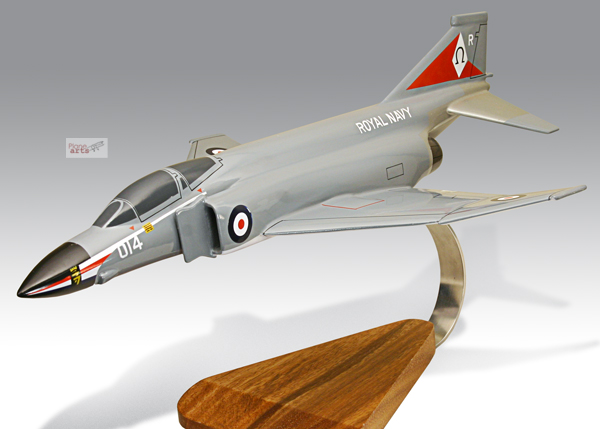
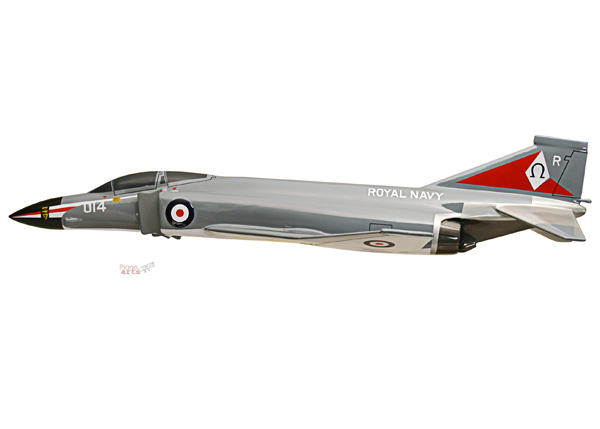
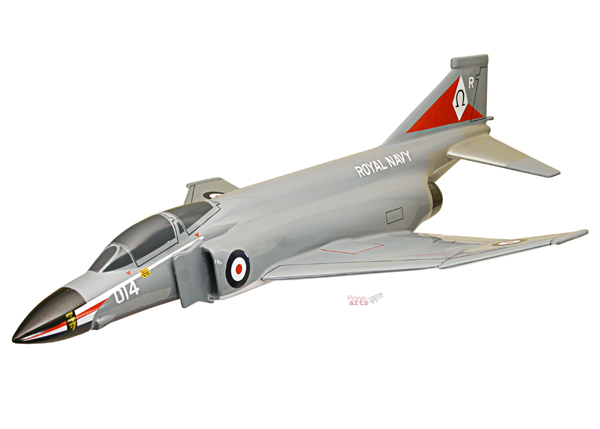
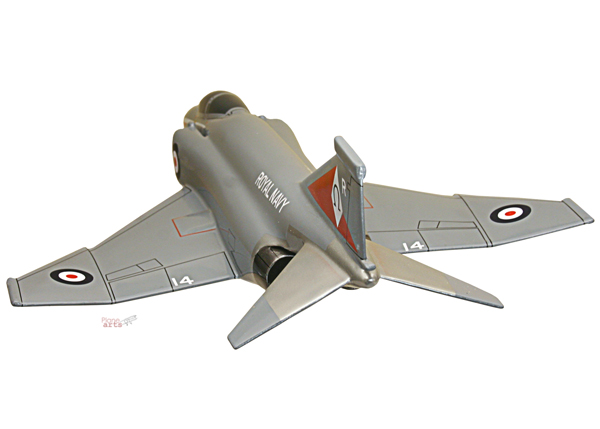
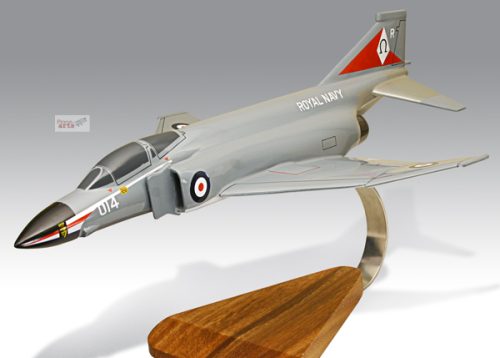
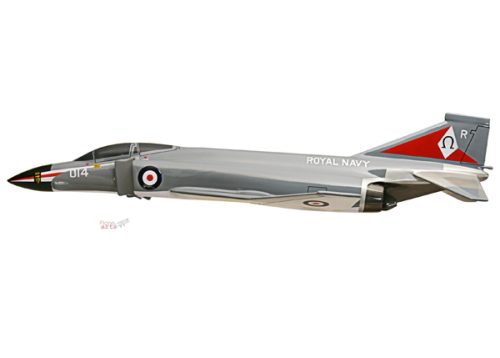
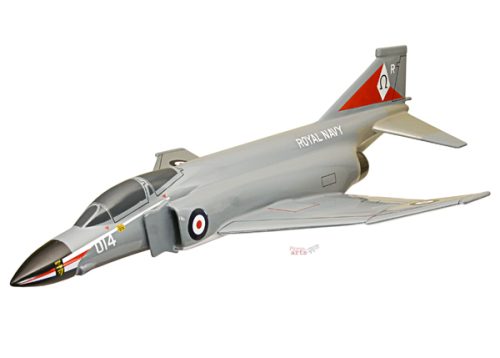
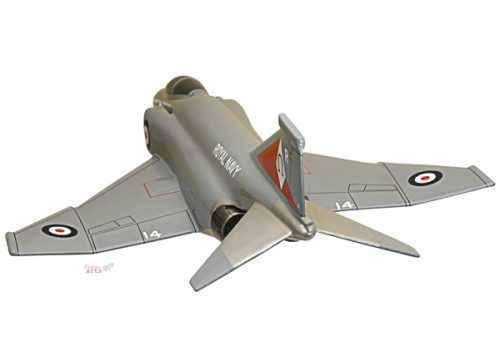



Reviews
There are no reviews yet.